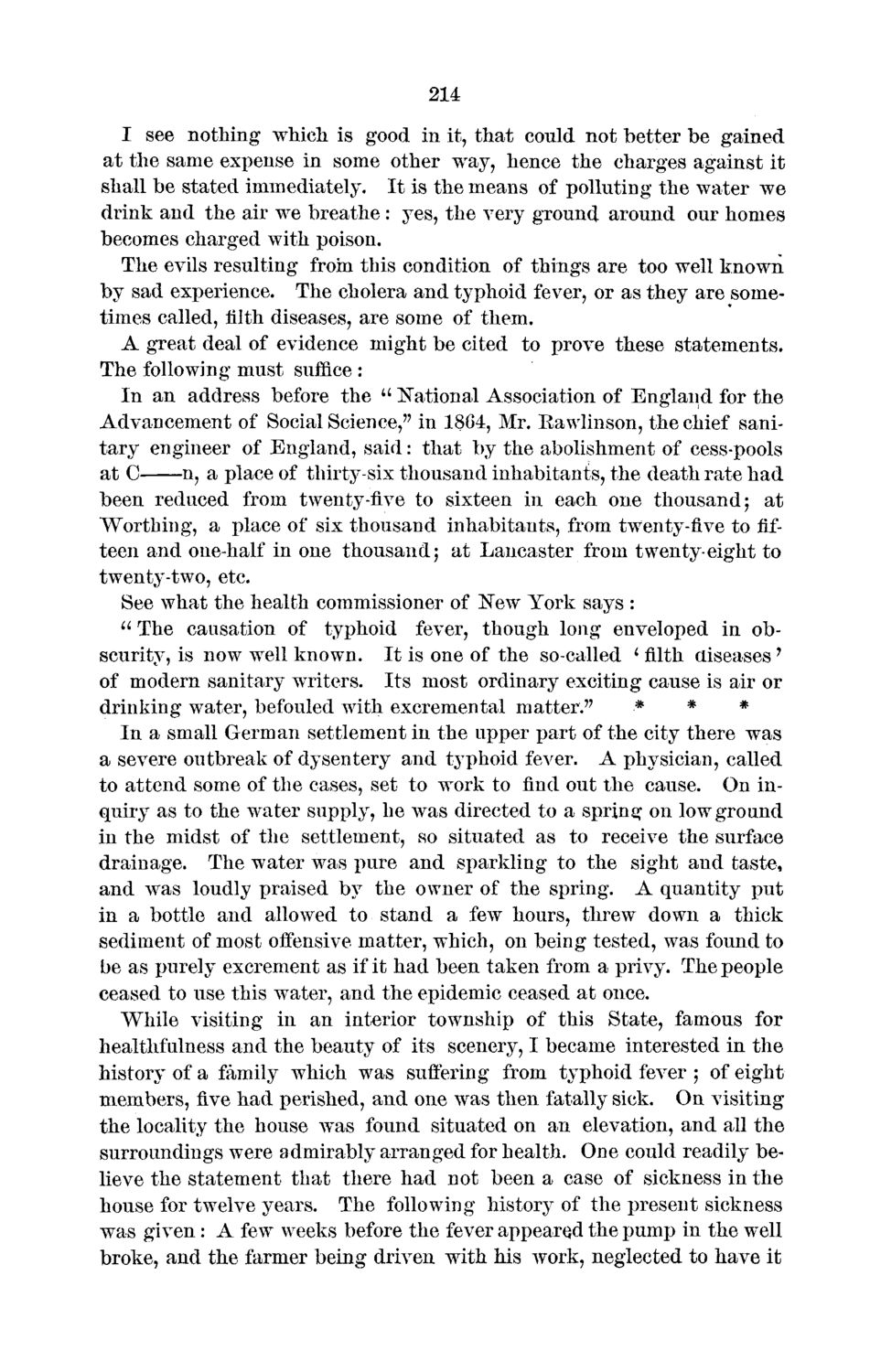| |
| |
Caption: Board of Trustees Minutes - 1872
This is a reduced-resolution page image for fast online browsing.

EXTRACTED TEXT FROM PAGE:
214 I see nothing which is good in it, that could not better be gained at the same expense in some other way, hence the charges against it shall be stated immediately. It is the means of polluting the water we drink and the air we breathe: yes, the very ground around our homes becomes charged with poison. The evils resulting from this condition of things are too well known by sad experience. The cholera and typhoid fever, or as they are sometimes called, filth diseases, are some of them. A great deal of evidence might be cited to prove these statements. The following must suffice : In an address before the u National Association of England for the Advancement of Social Science," in 1864, Mr. Eawlinson, the chief sanitary engineer of England, said: that by the abolishment of cess-pools at C n, a place of thirty-six thousand inhabitants, the death rate had been reduced from twenty-five to sixteen in each one thousand; at Worthing, a place of six thousand inhabitants, from twenty-five to fifteen and one-half in one thousand 5 at Lancaster from twenty-eight to twenty-two, etc. See what the health commissioner of New York says : " The causation of typhoid fever, though long enveloped in obscurity, is now well known. It is one of the so-called < filth diseases 7 of modern sanitary waiters. Its most ordinary exciting cause is air or drinking water, befouled with excremental matter." .# # # In a small German settlement in the upper part of the city there was a severe outbreak of dysentery and typhoid fever. A physician, called to attend some of the cases, set to work to find out the cause. On inquiry as to the water supply, he was directed to a spring on low ground in the midst of the settlement, so situated as to receive the surface drainage. The water was pure and sparkling to the sight and taste, and was loudly praised by the owner of the spring. A quantity put in a bottle and allowed to stand a few hours, threw down a thick sediment of most offensive matter, which, on being tested, was found to be as purely excrement as if it had been taken from a privy. The people ceased to use this water, and the epidemic ceased at once. While visiting in an interior township of this State, famous for healthfullness and the beauty of its scenery, I became interested in the history of a family which was suffering from typhoid fever ; of eight members, five had perished, and one was then fatally sick. On visiting the locality the house was found situated on an elevation, and all the surroundings were admirably arranged for health. One could readily believe the statement that there had not been a case of sickness in the house for twelve years. The following history of the present sickness was given: A few weeks before the fever appeared the pump in the well broke, and the farmer being driven with his work, neglected to have it
| |